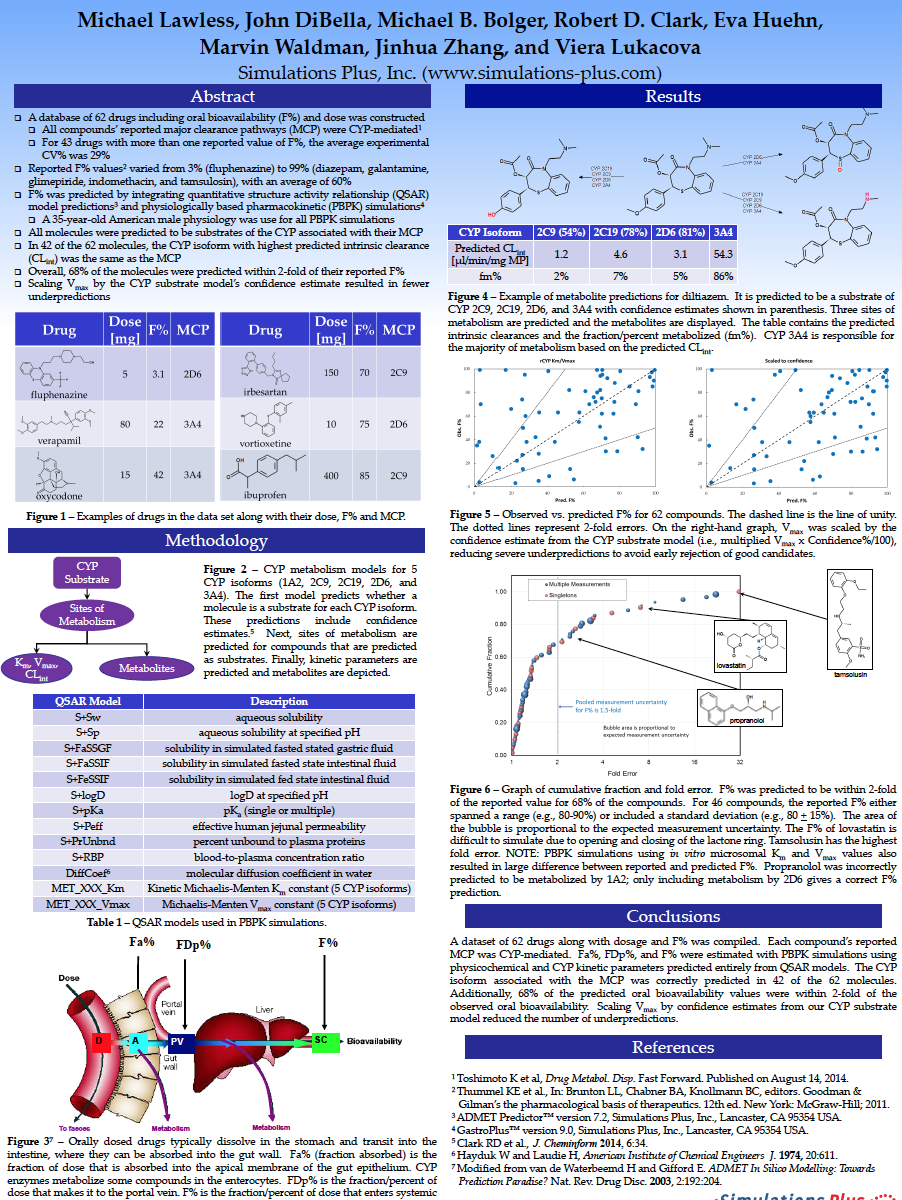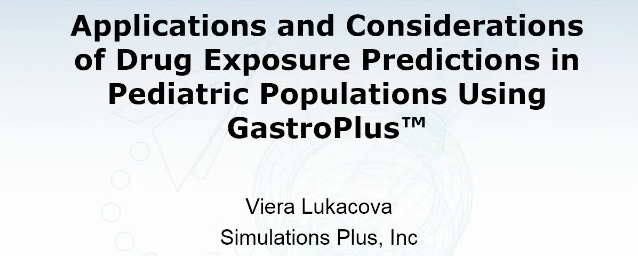Purpose: Recent advances in immunotherapy of advanced human cancers underscored the need to address and eliminate tumor immune evasion. The myeloid-derived...

5-Aryl-1H-pyrazole-3-carboxylic acids as selective inhibitors of human carbonic anhydrases IX and XII
Inhibitory activity of a congeneric set of 23 phenyl-substituted 5-phenyl-pyrazole-3-carboxylic acids toward human carbonic anhydrase (hCA, EC 4.2.1.1) isoforms I, II, IX and XII was evaluated by a stopped-flow CO2 hydrase assay.

Role of Self-Association and Supersaturation in Oral Absorption of a Poorly Soluble Weakly Basic Drug
Precipitation of weakly basic drugs in intestinal fluids can affect oral drug absorption.

Ranking the binding energies of p53 mutant activators and their ADMET properties
The guardian of the genome, p53, is the most mutated protein found in all cancer cells. Restoration of wild-type activity to mutant p53 offers promise to eradicate cancer cells using novel pharmacological agents.

Computational evidence to design an appropriate candidate for the treatment of Alzheimer’s disease through replacement of the heptamethylene linker of bis(7)tacrine with S-allylcysteine
Due to the multiple pathogens of Alzheimer's disease, multitarget-directed ligand (MTDL) design has been highly regarded in recent years.

Warfarin-dependent gamma-carboxylation regulates androgen receptor activity
The anti-coagulant warfarin prevents the gamma-carboxylation (gla) of target proteins by interfering with the vitamin K cycle through its inhibition of the vitamin K epoxide...

Role of computer-aided drug design in modern drug discovery
Drug discovery utilizes chemical biology and computational drug design approaches for the efficient identification and optimization of lead compounds.

Identification of Androgen Receptor Splice Variants in the Pten Deficient Murine Prostate Cancer Model
Androgen receptor (AR) variants are associated with resistance to anti androgen therapy both in human prostate cancer cell lines and clinical samples.

Simulations Plus Extends Research Agreement with National Institute of Environmental Health Sciences
Software programs will continue to play vital role for the National Toxicology Program

A long-duration dihydroorotate dehydrogenase inhibitor (DSM265) for prevention and treatment of malaria
Malaria is one of the most significant causes of childhood mortality, but disease control efforts are threatened by resistance of the Plasmodium parasite to current therapies.

Simulations Plus Reports Third Quarter FY2015 Financial Results
Revenues up 58.9%, Net Income up 41.7%
Board declares dividend of $0.05/share

TLR9 signaling through NF-κB/RELA and STAT3 promotes tumor-propagating potential of prostate cancer cells
Prostate cancer progression was associated with tumorigenic signaling activated by proinflammatory mediators. However, the etiology of these events remains elusive.

Simulations Plus Sets Date for 3rd Quarter 2015 Earnings Release and Conference Call
Conference call to be on Monday, July 13, 2015, at 4:15 p.m. EDT

Pharmacometric Models for Characterizing the Pharmacokinetics of Orally Inhaled Drugs
During the last decades, the importance of modeling and simulation in clinical drug development, with the goal to qualitatively and quantitatively assess and understand mechanisms of pharmacokinetic processes...

Food Effect in Humans: Predicting the Risk Through In Vitro Dissolution and In Vivo Pharmacokinetic Models
In vitro and in vivo experimental models are frequently used to assess a new chemical entity's (NCE) biopharmaceutical performance risk for food effect (FE) in humans.

Development and validation of in vitro-in vivo correlation (IVIVC) for estradiol transdermal drug delivery systems
The objective of this study was to develop a level A in vitro-in vivo correlation (IVIVC) for drug-in-adhesive (DIA) type estradiol transdermaldrug delivery systems (TDDS).

Virtual tests for new therapies (From Bayer Research)
When researchers design a new drug product, they have to know exactly what will happen to the active ingredient once it is inside the body.

Prediction of Oral Bioavailability in silico
A database of 62 drugs including oral bioavailability (F%) and dose was constructed: All compounds’ reported major clearance pathways (MCP) were CYP-mediated, For 43 drugs with more than one reported value...

Applications and considerations of drug exposure predictions in pediatric
This GastroPlus™ User Group webinar will focus on special considerations when performing pediatric PBPK modeling in GastroPlus™.

What’s New in ADMET Predictor™ 7.2?
Two new models, fraction unbound to liver microsomes and unbound human liver microsomal intrinsic clearance, were added to ADMET Predictor 7.2.
